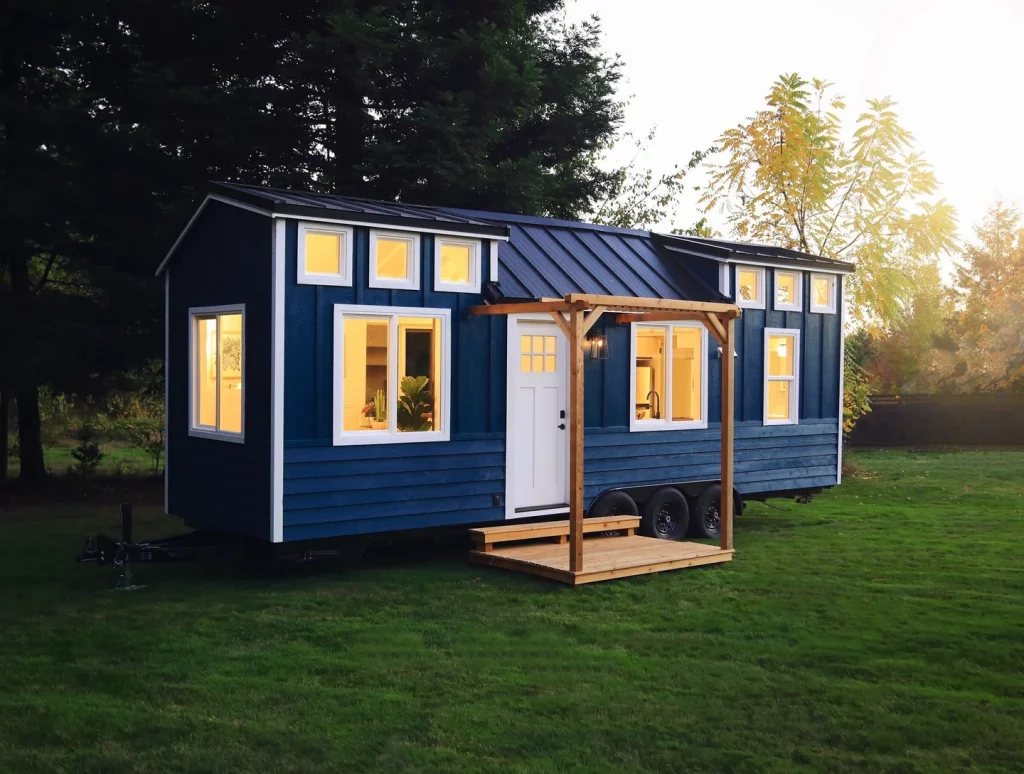
Tiny Houses
Helpful guides to building your own tiny house can be found online. You can also purchase plans ranging in price that can help provide guidance.
What Is It?
Tiny houses – units 400 square feet or less – are small homes that dramatically reduce occupants’ ecological impact. Tiny houses are also increasingly being used for temporary or permanent housing for those in need. Many tiny homes operate off-grid through the use of solar power, rainwater collection, and other sustainable systems. You can build your own or purchase one that is pre-fabricated, which leads to more efficient use of materials and less waste.
What Does it Do?
Tiny houses generate on average 2,000 pounds of CO2 emissions annually as compared to 28,000 pounds produced by the average-sized home. By occupying less space and consuming fewer resources to build and maintain, tiny houses approach housing in a more ecologically sustainable way.
Living in a smaller space leads to lifestyle changes for occupants. The average tiny home occupant reduces their environmental impact by 45% or more by downsizing. Less space means using less water, buying less clothing, recycling more, and for many, operating with a more local mindset. These changes all signify a shift in thinking to ecological sustainability by fostering mindful consumption.
Tiny houses are also being used to address housing access issues in metropolitan areas like Detroit as a solution to affordable housing shortages and homelessness.
How Can It Be Accessed?
The tiny house movement is growing rapidly, and there are communities across the US where you can either rent or build your own. Tiny houses range in price but are significantly more affordable than traditional homes. As with most projects, it is more affordable to build your own if you can, and you can access a variety of free or paid building plans. You can build your own for as little as $5,000 – $8,000 depending on cost of materials, and there are lots of good guides online. The average tiny house costs $52,000, and can be ordered and delivered or customized for your needs.
Artist Mayuko Fujino is currently using Toolshed’s Tool Exchange in Hudson, NY to build her own tiny house! You can follow her progress on her website and Instagram to learn more about how tiny houses are built.
Funding for tiny homes and other forms of alternative homes like yurts is inconsistent – traditional mortgages don’t often cover these dwellings. As a result, that industry needs to evolve. In the meantime, there is a need for grants and loans for low-income households to build their own tiny homes.
Regulations for tiny homes vary by region, so check with your municipality before investing. Zoning laws have not been updated in many areas to accommodate tiny houses and other alternative living communities; advocating to change those regulations is a great way to get involved.
You can check your local zoning regulations here: Columbia County Building Department, Greene County Department of Planning, Dutchess County Planning and Development or Ulster County Planning Department.